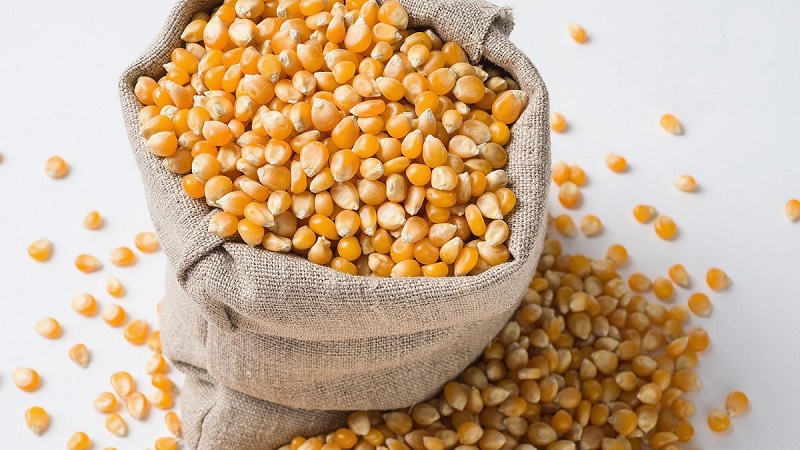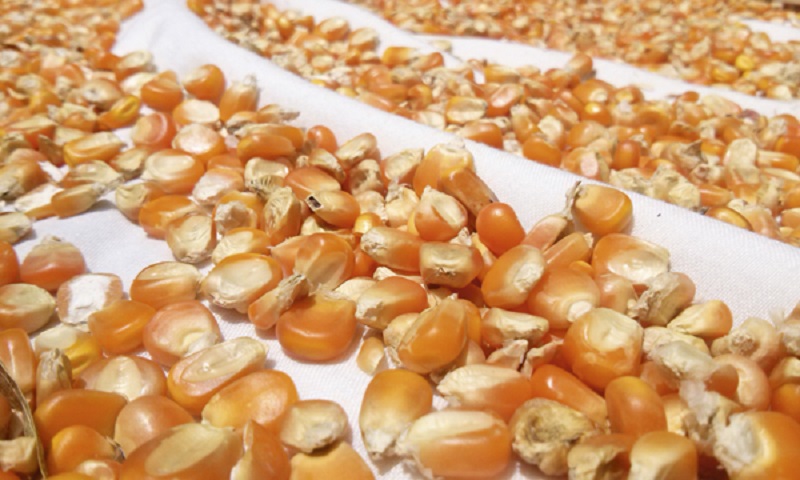Maize (Zea mays L.) is one of the leading, highly valuable cereals in modern world agriculture, deservedly ranking third in the world in terms of acreage, accounting for at least 30-40% of the global grain balance. In global agriculture, corn is used as a versatile crop for food and technical needs (production of cereals and flour, food starch and vegetable oil, honey and sugar, dextrin and ethyl alcohol, livestock feed, etc.) Corn grits produced by separating the corn germ have high consumer properties and market value. An important stage of production is the post-harvest processing of corn grain.
In the overall production process of corn grain processing in agriculture, the main costs are incurred in post-harvest processing, which in turn consists of cleaning, drying and bringing corn seeds to the required conditions (standards), according to the current quality indicators set by the relevant state standards.
The material (heap) of grain (seed) that comes for post-harvest processing consists of full and partial corn kernels and various types of impurities. Thus, the grain heap is a mixture of grain impurities (full, small, sprouted and damaged grains of the main crop – corn), mineral impurities (pebbles, stones, ore and slag), as well as weed impurities (spoiled corn grains, plant particles, leaves, ears, straw, chaff, earth, etc.), and may also include grains of other different crops and weeds. It should be noted that the content of impurities in the grain of the main crop can range from 2 to 15%. The task of post-harvest cleaning is to remove these impurities from the grain heap, as well as to separate out the shrivelled, broken and damaged grain of the main crop to increase the purity of the grain raw material.
Machines for cleaning corn grain
However, it should be clarified that it is impossible to clean corn grain from all impurities using a single machine. The reason is that the cleaning process is a multifunctional, complex technological process that is influenced by many factors. And due to the fact that corn grain, like any other grain, has many different physical and mechanical properties, the main principle of the cleaning process is to separate the initial mixture into separate fractions that differ in these same physical and mechanical properties. For this reason, there is no machine that can separate all types of impurities simultaneously. Taking into account the variety of these properties and characteristics, the following methods of corn grain cleaning and corresponding machines are used, namely geometric characteristics (scalper sieves are used for width, thickness, cross-sectional shape; trippers are used for length); aerodynamic properties (pneumatic separators, air separators) by gravitational properties, density and surface condition (vibro-pneumatic machines, pad machines, stone separators, pneumatic tables); by magnetic properties (magnetic separators); by colour factor (photo separators), and so on. As you may have noticed, some machines work by combining different features and properties. OLIS specialises in the production of these machines, as well as many other equipment for the grain processing industry.
Types of corn grain cleaning
As for the post-harvest cleaning of corn grain, there are the following types of cleaning, which are generally accepted for cleaning all grain crops. They differ depending on the intended purpose and the technical means used, namely
Thus, the main purpose of preliminary cleaning is to ensure favourable conditions for further post-harvest cleaning operations.
Primary cleaning (the main goal is to separate large, small and light impurities, but also to sort the main fraction – corn grain and impurities, with minimal losses of the main grain. It is allowed to start post-harvest processing immediately with primary cleaning, provided that the percentage of weeds and grain moisture is low).
Secondary cleaning (the main purpose is to bring the quality of corn grain to food or seed quality. It is used after preliminary and primary cleaning).
Sorting or calibration is the process of mechanical separation of grain cleaned from impurities into fractions (the main purpose is to separate the grain of the main crop into fractions according to a certain characteristic).
Based on the above, it can be concluded that the peculiarities of corn grain cleaning are a combination of all technological operations of post-harvest cleaning described above. These cleaning operations are a set of complementary technological processes that result in ensuring the quality of corn grain in accordance with the required conditions according to the current quality standards, which will allow its rational use for its intended purpose.
For more information and advice, please call: ☎ +38 (067) 822-85-58.































